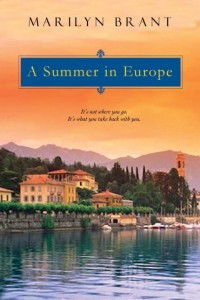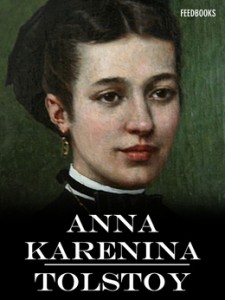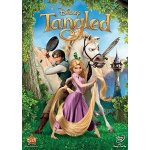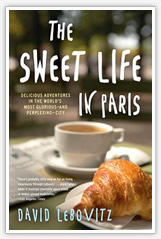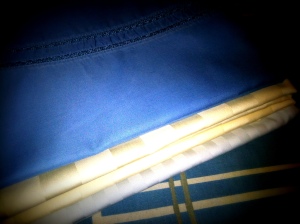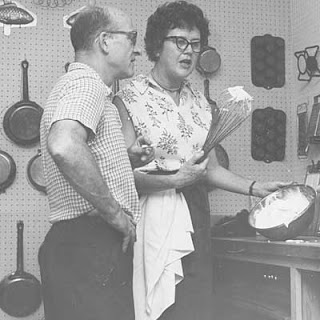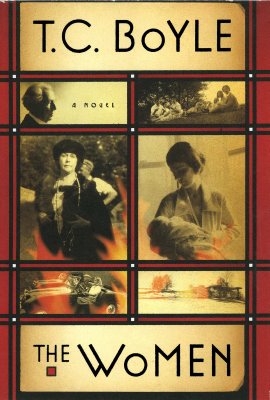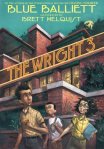I’ve always had this peculiar behavior; I like to read by theme or by sequence.
Every now and then I read through all my Cat Who books or my Dick Francis novels in chronological order. You’re probably already sick of hearing about my books about France, but too bad. I got a bunch more for my birthday. It’s my blog and I’ll write about France if I want to. 🙂
I watched Julie and Julia again the other day and decided it was time to do another theme party of books and movies.
First I decided to read Julie Powell’s follow-up memoir, Cleaving, to see if she still had the magic. I had heard that it wasn’t as good as Julie and Julia and that Powell had kind of disappeared into the literary wasteland of has-been authors. When I Googled her, the most recent hit is from 2009, and the last time she posted on her blog was in 2010. Ouch!
The complete title of the 2009 book pretty much tells its whole story: Cleaving: A Story of Marriage, Meat, and Obsession. It truly is a story of obsession following the screaming success of Julie’s blog and Julie and Julia — of Julie’s tormented affair with “D”, of Eric’s philandering, and of how Julie found herself in her next new adventure, learning how to butcher meat. Published before the highly successful movie came out, Cleaving is an intimate story (maybe too intimate) of a woman trying to reinvent herself and build a future.
The book gets lots of bad reviews for its very specific telling of the inside picture of butchering and of Julie’s bad girl sex life. After getting over the structure which requires the reader to make pretty tenuous links between the cleaving of a marriage and the cleaving of an animal’s flesh and innards, I came to love Julie’s obsessions.
What we found endearing about Julie Powell in the movie Julie and Julia was that Amy Adams and Nora Ephron made Julie look kinda quirky and cute, but really, who chooses to cook her way through Mastering the Art of French Cooking in one year? I don’t think Julia Child was right when she suspected Powell of trying to get publicity riding on Child’s name; Julie is just that obsessive, and it shows in Cleaving. And most of the time it’s just plain — all right, I’ll go there — verging on craziness.
On the other hand, Powell’s prose is just plain good. I found myself caring about how to create a crown roast and how to use a band saw correctly. If you’re a foodie, she may well hook you in as she did me. There’s a lot of visits to restaurants and food industry insider information and I just ate it up — figuratively, of course.
So do I think you should read Cleaving? Yes, if you are a foodie and loved Julie and Julia. It’s the flip side of a very interesting woman, with a little hot sauce thrown in.
And then there’s the other flip side — Nancy Verde Barr’s memoir entitled Backstage with Julia.
This is a really fun book if you care about Julia Child and her impact on the cooking world. Even Barr’s use of her middle name is due to the sagacity of Julia Child; when she found out that Barr’s mother was Italian, she told Barr to use her full name to give her cooking more credence. And that’s just one little story that appears in this loving look back at a phenomenal woman.
Backstage with Julia is a set of fond memories packaged together in a book that cannot help but endear itself to you if you are a foodie. Nancy Barr served as Julia Child’s production assistant and travel companion from 1980 until Child’s death in 2004. When she got the chance to work with Child — already a culinary icon — someone told her to keep a diary. She didn’t, but apparently working with Julia Child has enough emotional impact to sear the memories in one’s brain.
What was fun about this book for me was the parallels to the Julie and Julia movie. Nora Ephron based much of her script for the Julia parts on Child’s memoir (with Alex Prud’homme), My Life in France. Although Backstage with Julia tells of Julia’s success in the United States and her media empire, there are many memories that Barr recounts via Child that are recognizable to the movie fan.
Julia’s love story with Paul Child also plays itself out here. In 1980, when Nancy Barr first began working with Julia Child, Paul Child had already begun to have the small strokes and memory issues that plagued his later years. It didn’t matter to Julia; Paul was an integral part of her success and he went everywhere with her.
The scene in Julie and Julia showing Paul and Julia in the bathtub for their annual Valentine message was real, and in Barr’s retelling of this story, the reader can feel the humor and the love shared.
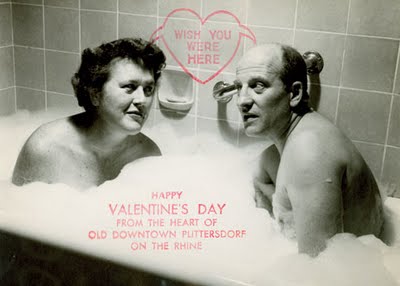 Both of these books are about dreams — Powell’s with finding herself and Barr’s amazing chance to work with and become a close friend of Julia Child. They are also really interesting to read, if you are the person who will find fun in knowing more about three fascinating women — Powell, Barr, and la divine Child. I thought this quote from Powell’s book really summed up why I wanted to share these two books with you. It’s fun — you get me — and since you keep reading my blog, you must enjoy sharing with me.
Both of these books are about dreams — Powell’s with finding herself and Barr’s amazing chance to work with and become a close friend of Julia Child. They are also really interesting to read, if you are the person who will find fun in knowing more about three fascinating women — Powell, Barr, and la divine Child. I thought this quote from Powell’s book really summed up why I wanted to share these two books with you. It’s fun — you get me — and since you keep reading my blog, you must enjoy sharing with me.
You share things with the people who want you to share them. Who get it. Otherwise, where’s the fun?
You’ll have to excuse me now; I need to roast a chicken. Bon appetit!
Want more Jennie and Julia? Check out my previous posts about Julia Child here and here.
